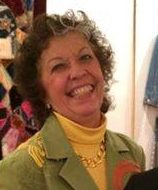Not long ago, two sensitive, gifted children came in on the same day telling me some recent bad  dreams. These were intense sessions. It was hard for them to tell their bad/scary dreams. Their moms were also worried about what these dreams might reveal – about their child’s psyches, about their parenting, about what the dreams might mean. Bad, scary dreams are hard for anyone to deal with, especially children. And when you add sensitivity and intensity into the mix, well, strap on your boots, we’re getting serious here! We did unravel these dreams, and their possible meanings. I helped the dreamers and their moms get in a much better place with the scariness of the bad dreams. Now it occurs to me that they’re likely not the only ones facing scary or otherwise bad dreams. Here’s some of my thoughts about how to face bad dreams – for highly sensitive or gifted children and adults.
dreams. These were intense sessions. It was hard for them to tell their bad/scary dreams. Their moms were also worried about what these dreams might reveal – about their child’s psyches, about their parenting, about what the dreams might mean. Bad, scary dreams are hard for anyone to deal with, especially children. And when you add sensitivity and intensity into the mix, well, strap on your boots, we’re getting serious here! We did unravel these dreams, and their possible meanings. I helped the dreamers and their moms get in a much better place with the scariness of the bad dreams. Now it occurs to me that they’re likely not the only ones facing scary or otherwise bad dreams. Here’s some of my thoughts about how to face bad dreams – for highly sensitive or gifted children and adults.
Not long after that, I had a bad dream myself.
I woke up in the middle of the night when it was pitch black outside with my heart racing and pounding, feeling afraid for my life from what had happened in the dream. As I lay there, calming myself (using some of the same tools I teach my clients) I realized that in addition to paying attention to the emotions I was experiencing, and grounding myself with connecting with where I was and what time it was, I could help myself feel better by taking the action of the dream forward. So I continued the story in my imagination – what I did, what others did. Before long, I was literally waking up again, this time peacefully, and noticing that it was light outside. Apparently I had fallen asleep somewhere along the way, and slept until the alarm clock went off.
 It’s easy to get worried about bad dreams- ours or our children’s.
It’s easy to get worried about bad dreams- ours or our children’s.
Highly sensitive, gifted, intense people, especially those with vivid imaginations (what psychologist Kazimierz Dabrowski might call Imaginational Overexcitability[1]) may have dreams that are particularly vivid and intense, especially when they are “bad dreams”. Creative people may experience this most significantly, as one of the things that makes their creativity possible is a more permeable barrier between the conscious mind and the unconscious.
We ask ourselves, What do these bad dreams mean? Are they an omen we should heed? If so, about what? In what way? Do they mean we have missed something in our parenting of our children? Especially when they are scary or unpleasant dreams, do they show that something is awry? When they are haunting, how do we dispel their negative energy – for ourselves, or for our children?
Here’s some of what I’ve learned about dreams
First of all, dreams are natural phenomena[2]. We cannot voluntarily create our own dreams. They are not intentional, and they are not signs of pathology. Carl Jung’s view of dreams (which is the one that makes the most sense to me) is that they come from the unconscious as coded messages to our conscious selves. The catch comes in decoding their messages. Dreams speak in metaphorical, symbolic language, not literal language even though they may contain people and places from our current life or our memory. Occasionally they contain people who will show up in our lives at a later time. Of course we cannot know that at the time we dream them.
Dreams also almost always (95 – 99% of the time) speak about the inner world and our inner life, not  our concrete, literal every-day life. This was one of the hardest things for me to wrap my head around as I began to learn about dreams and how to understand them. For example, if I dream about my mother, in all likelihood, the message in the dream does not have anything to do with my actual mother, but my inner mother; that is, how I mother myself, or how I feel (or don’t feel) mothered.
our concrete, literal every-day life. This was one of the hardest things for me to wrap my head around as I began to learn about dreams and how to understand them. For example, if I dream about my mother, in all likelihood, the message in the dream does not have anything to do with my actual mother, but my inner mother; that is, how I mother myself, or how I feel (or don’t feel) mothered.
One significant exception to this is when children or adults dream of life experiences that have been traumatic. Dreaming about the trauma, often repeatedly, is a common response to traumatic life events. It is actually proof that something was truly traumatic. When this is the case, the trauma needs to be acknowledged and treated as such.
It’s normal to have “dark man dreams”
 especially when we are accessing and activating our own inner strength in new ways, according to Jungian Analyst Clarissa Pinkola Estes[3]. This seems counter-intuitive, but as I have paid attention to my own dreams and those of my clients, I have found this to be true. Carl Jung takes it further to say that when we have “persecutory dreams”, it always means that an inner character is persecuting the rest of us[2]. He teaches us to not be afraid of this, but to turn and face that dark man, bear or lion, giant or monster, because that creature is a part of ourselves. He goes on to say that a dream like this comes because we need to recognize and face the metaphoric bear, lion or other monster within.
especially when we are accessing and activating our own inner strength in new ways, according to Jungian Analyst Clarissa Pinkola Estes[3]. This seems counter-intuitive, but as I have paid attention to my own dreams and those of my clients, I have found this to be true. Carl Jung takes it further to say that when we have “persecutory dreams”, it always means that an inner character is persecuting the rest of us[2]. He teaches us to not be afraid of this, but to turn and face that dark man, bear or lion, giant or monster, because that creature is a part of ourselves. He goes on to say that a dream like this comes because we need to recognize and face the metaphoric bear, lion or other monster within.
We are familiar with the idea of self-sabotage, and this is one of the ways it shows up, and one way we can acknowledge it and face it directly, if metaphorically.When we face it directly, it no longer has the opportunity to sneak up on us in the dark because we have confronted it in the light.
Here’s How it Worked for Me
Indeed, in my ‘Active Imagination’ following my recent bad dream, I first reached for my cell phone to call for help. Then I realized that along with those who came to help me, I needed to face the creature who was threatening my life in the dream. I decided to do just that, and thought of how I would need to prepare for such an encounter. I knew that I would need to ‘wear’ police SWAT team gear and a HazMat suit. Apparently that was all I needed to ‘do’ at that moment. How do I know? My plan for how to prepare to meet the inner monster is the last thing I remember of the Active Imagination. The next thing I knew, I was waking up in the morning. Later, I resumed the Active Imagination and went and faced the monster. And once I did, it no longer threatened me. Instead, we had a conversation, a very enlightening and freeing one at that.
“Imagination, employed in this way, is not the same as fantasy. Jung has called this use of imagination by the term active imagination, to distinguish it from the ordinary passive imagination which is nothing but a self-propelling fantasy. Active imagination is entered into consciously, in an effort to engage the unconscious in dialogue with the ego.”[4]
How can this help you with your dreams, and your children’s dreams, especially when they’re scary or feel bad in some other way?
First, when we have bad dreams, it is important to allow ourselves to feel, identify and release our  emotions. If you haven’t heard me talk about this, it’s a tool I call “Catch & Release”. Breathe in, feel and name your emotion(s), breathe out and release it. Even better,
emotions. If you haven’t heard me talk about this, it’s a tool I call “Catch & Release”. Breathe in, feel and name your emotion(s), breathe out and release it. Even better,
- hold something non-breakable in your hands, THEN
- breathe in, feeling the emotion and identifying it
- breathe out and drop the object while releasing the emotion
- repeat this as many times as it takes to feel a release of your emotion.
 Second, we can work with our bad dreams. It can be helpful to –
Second, we can work with our bad dreams. It can be helpful to –
- write out the story of the dream, in first person present tense. “I am doing this. I go here. He does that. She says that.” and so on.
- Draw or paint either scene(s) of the dream or emotions you felt during the dream, or both.
- Take the story of the dream forward in active imagination. What might happen next, and next, and next? Write this out too. Draw or paint, act it out, dance it, play or sing it also if you like. Who would do or say what? Who would respond to this in what way? What else might happen? And how would you feel if this were to happen?
In these ways, you can face your bad dreams, and help your children face theirs, in a creative, sensitive and yet very powerful way.
As with many of the tools I share, feel free to use them and to email or call me (303- 987-0346) with your questions. And if that’s not enough, we can schedule a consultation – in person, or online.
[1] Mendaglio, Sal. Dabrowski’s Theory of Positive Disintegration
[2] Jung, Carl G. “Children’s Dreams”
[3] Estes, Clarissa Pinkola. “Women Who Run With the Wolves”
[4] Singer, June, Boundaries of the Soul

